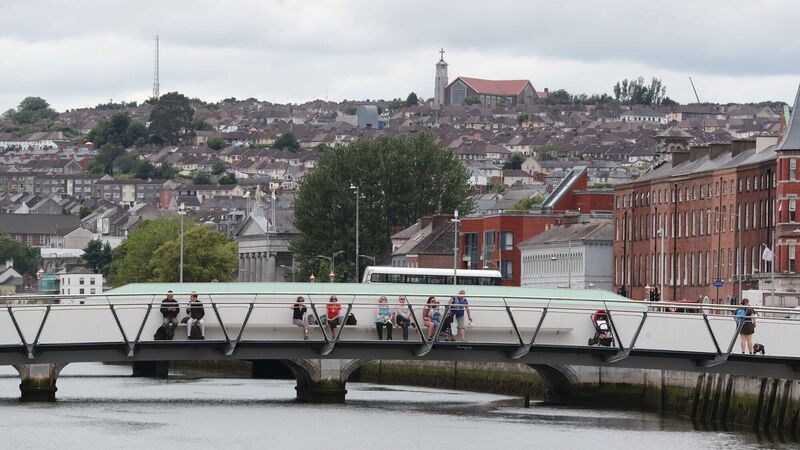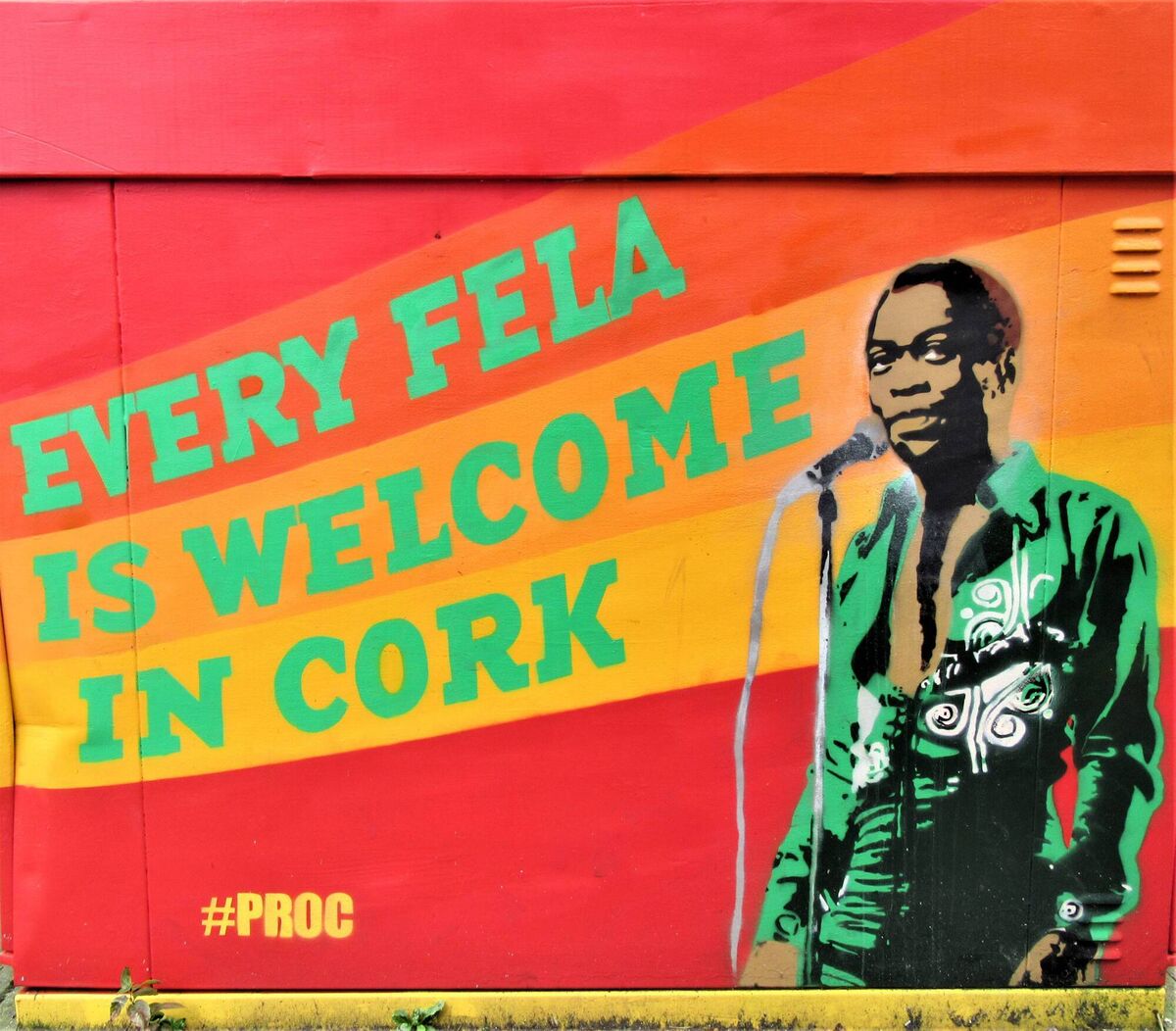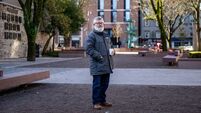Michael Moynihan: Curbed enthusiasm could put us on right path to improving cities

Cork sits on a soggy base and it could take inspiration from Lexington on how to embrace its waterways. Picture: Jim Coughlan.
PEOPLE get angry about cars and bikes, don’t they?
I say that because in recent weeks, I’ve mentioned cars and bikes and when I do the response has been ... jagged? Unhinged?
A hypercaffeinated version of cranky?
Well, we’ll get back to that in due course. Just waiting to hear back about my application for the witness protection programme.
One lesson learned — this is being said very gingerly — is that in many instances of conflict related to the above groups, we have a tension between personal responsibility and the good of the collective.
There are two ways of putting this lesson to work: To accept that people who can’t agree on how to use the roads can’t agree on anything, or the exact opposite.
By that, I mean trusting that people in Cork have a greater and wider interest than mere one-upmanship — that they’re interested in improving the city for everyone.
This brings me to a subset of critics: The odd person who points out to your columnist that Henry Ford’s sharp observation of a century ago still stands: can complain.
Accordingly, I invite people to do as I did one evening last week and cast the net wide to see if there are pointers and hints to be found about improving the city.
Not broad-based multibillion-euro development projects, vast infrastructural changes — if you thought cyclists and drivers disagreed, check out how those are received — but small, achievable changes.
Free, preferably, but low-cost at the very least.
One great resource for same? Curbed.com, which began as a website “largely focused on the city’s architecture and design”, according to its own description — the city in question being New York — before Vox Media took it over.
Its interest in “architecture and design”, as well as other aspects of urban life, means it also points to interesting organisations and movements whose work could be easily applied to Cork.
Take depave.org — an organisation that “transforms over-paved places, creates resilient community green spaces, promotes workforce development and education, and advocates for policy change to undo manifestations of systemic racism.”
The amount of dead space within Cork — a few square metres of waste tarmacadam here, an unused concrete half-yard there — would benefit from a similar movement here, surely.
Or what about another organisation, walkyourcity.org, which specialises in providing custom signs for neighbourhoods — but with a specific, helpful twist.
The signs carry messages such as ‘it’s a two-minute walk to the library from here’ or ‘the shop is a four-minute walk in this direction’.
It’s used in cities in the States from West Virginia to New Mexico: of course, it could work here.
Not all the initiatives pushed by Curbed even need that much material. One of their other suggestions is to simply document your street and area with photographs and stories.
That idea drives a thousand Facebook groups; the nagging sense that the shop you imagined occupying that particular location was not, in fact, the one you remember, but something completely different. But what?
Fishing the phone out and taking a snap freezes it forever; when you consider the effort needed in the not-so-distant past to take a picture it’s hardly surprising so few survive the streetscapes we grew up with.
Curbed has more to offer: it tells us about a Brooklyn organisation called DoTank, which upcycles “discarded pallets into street furniture they set up on empty sidewalks, reclaiming the corner for the public.”
(This sounds far trendier, if a little less threatening, with DoTank’s own description: chairbombing.)

There’s a role for council employees in Curbed’s list of suggestions, which shares the initiative begun by the city of Charlotte in the US: Between October 2015 and June 2016, 150 City of Charlotte employees took 10 minutes each week to engage one person in the community in conversation about how we can make Charlotte better.
Could this be done in Cork? Of course, it could.
My favourite, though, has to be the Scape Town Branch Commons project in Lexington.
Scape is a landscape architecture firm and its work in Lexington involved creating “a linear network of public space along the 2.5-mile path of the historic Town Branch creek in downtown Lexington, Kentucky”.
“Rather than introducing a single daylit stream channel into the city fabric, the design uses the local limestone (karst) geology as inspiration for a series of pools, pockets, water windows, and stream channels that brings water into the public realm.”
This is an undertaking on a different level to those mentioned earlier, one which needs the full co-operation and commitment of the municipal authority, but the boldness of the vision is staggering.
(Side note: It was recognised as such when the project’s principal designer, Scape founder Kate Orff, was duly awarded a MacArthur Genius grant.)
Here a project in far-off Kentucky resonates far closer to home, and not just because the centre of Cork is floating above a soggy base. But because such a waterway already exists.
Kudos here to the pal who pointed to the unobtrusive entrance at the water line on Merchant’s Quay, the one leading into darkness beneath the city.
This is a waterway that winds its way through to the South Channel on the other side of the central island (a small prize to the person who can identify where it emerges on that side).
Legend has it someone has to make a journey through that waterway at least once a year because of the debris which can end up there.
I leave it to your imaginations to conjure the sights, sounds, and in particular the smells, to be encountered as that person navigates a kayak through the narrow space.
But flip that around. Imagine — as in Lexington — if there were “a series of pools, pockets, water windows, and stream channels that brings water into the public realm” cutting diagonally across the city?
It’s not as if some of the Curbed suggestions haven’t already been done. Take the cinema in the open air (which we saw in Windmill Road in the city during the pandemic) or the outstanding work being done in putting parklets around the city.
Curbed lauds groups in the States which are painting electricity boxes — as has been done all over Cork — not to mention the alleys being ‘networked’ into shady cafes a la Grafton St, just off Oliver Plunkett St.
The natural inclination is to see the green of faraway hills when our own are green enough to begin with.
Credit where it’s due: there are groups in Cork working hard to make the city a better place for all of us, and there’s always room for more ideas to help with that work.











